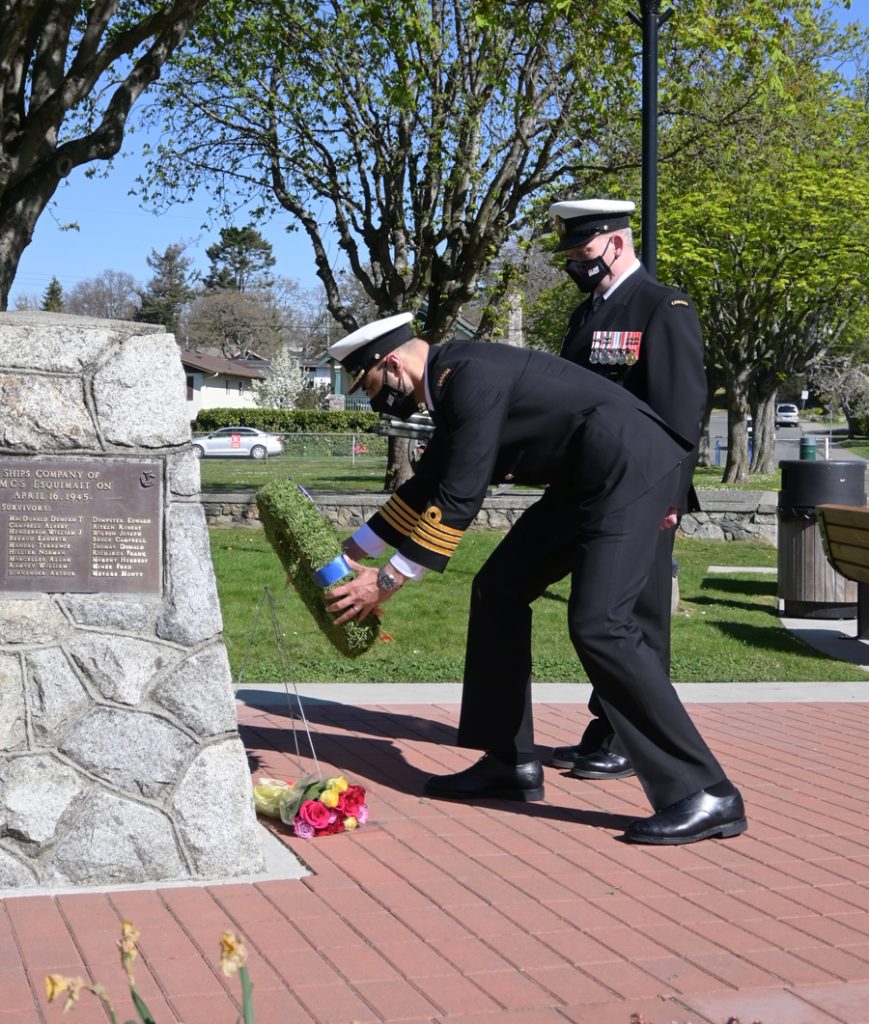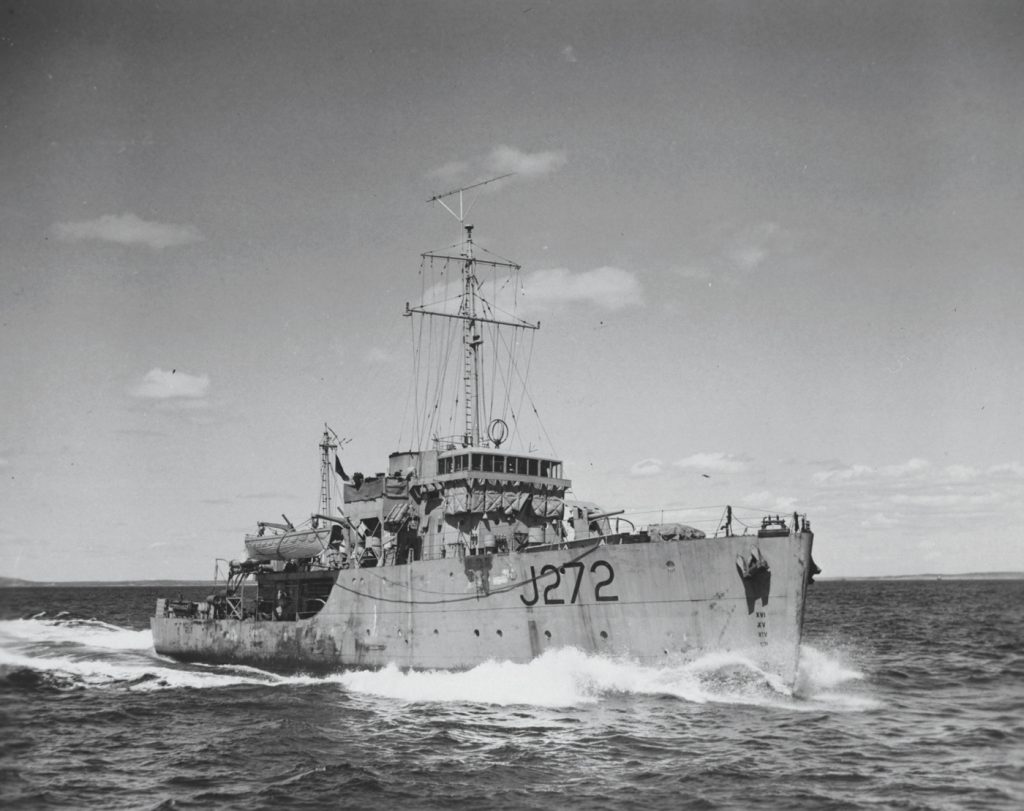HMCS Esquimalt Anniversary
By Lookout on Apr 20, 2021 with Comments 1
A/SLt Ty Pellerin
Base PA Office
––
SLt Michael Kazakoff woke up in his cabin at 6:30 a.m. as a torpedo from a German U-boat exploded.
He was one of the 71 crewmembers on board HMCS Esquimalt that had set out to conduct anti-submarine sweeps outside Halifax harbour on April 16, 1945.
“All I could see was a twisted mess of steel, with some glimmers of daylight shining through,” said SLt Kazakoff in a report.
The U-Boat hit Esquimalt on the starboard side, and the ensuing explosion ripped a gaping hole in the starboard quarter, disabling the ship’s power, and preventing a distress call.
As the Bangor-class minesweeper took on water, SLt Kazakoff removed his lifejacket to avoid getting caught in the jagged metal and began to crawl to safety.
He didn’t have much time to get out; it took less than four minutes for Esquimalt to sink. It was the last Canadian ship lost during the Battle of the Atlantic in the Second World War. Forty-four crew members perished in the attack.
“It is difficult to imagine the horrors the crew of HMCS Esquimalt faced that day,” says Capt(N) Sam Sader, CFB Esquimalt Base Commander. “Honouring the courage and sacrifice of those that served before us, especially on anniversaries such as this, is extremely important to our military community. By finding ways to remember in a safe and physically distanced way, we can keep their memory alive while acknowledging our responsibility to preserve the peace and freedom they fought to achieve.”

Captain (Navy) Sam Sader, Commander, CFB Esquimalt, and Chief Petty Officer First Class Al Darragh, Base Chief Petty Officer, lay a wreath at the HMCS Esquimalt memorial cairn on Friday to mark the 76th anniversary of the ship’s sinking. Photo by CFB Esquimalt Base Public Affairs
Last Friday marked the 76th anniversary of the sinking of HMCS Esquimalt. Each year a ceremony is held in the Township of Esquimalt’s Memorial Park. Due to the pandemic, the ceremony could not take place in its traditional form, but Capt(N) Sader, and CPO1 Al Darragh, Base Chief Petty Officer, laid a wreath at the cenotaph. Esquimalt Mayor Barb Desjardins, also laid a wreath at the cenotaph separately to mark the day.
“This is a very important event in our community, and we always want to recognize it in whatever way possible,” said Mayor Desjardins. “We want to acknowledge the family of the survivors, but also to acknowledge all the people in our community past and present that have served our country.”
For the survivors of the initial torpedo attack, such as SLt Kazakoff, their ordeal had only begun.
When attempting to abandon the ship, the heavy list to starboard submerged the lifeboat before it could be released. The crew managed to release four Carley floats – an inflatable raft common on warships at the time.
The remaining crew was stranded floating in sight of Halifax. The lack of any distress signals forced the crew to brave the cold waters for nearly six hours.
At 10:02 a.m. the ship was suspected of being sunk by a torpedo, and a search began. A crew of six members including SLt Kazakoff eventually signaled down a vessel sailing nearby, as well as HMCS Sarnia. Searching aircraft were able to relay the location of the remaining crew.
While many succumbed to the environment and injuries, 27 sailors were rescued.
The sinking of HMCS Esquimalt marked an end to the Battle of the Atlantic for Canada, the longest military campaign in the Second World War.
––––
Filed Under: Top Stories
About the Author:







The last U-boat officer surviving from U-190, LT (Eng) Werner Hirschmann died last fall. He was a welcomed member of the Esquimalt Association for many years. During the war the two opponents tried to destroy each other. U-190 did, obedient to their country’s orders. With peacetime, the survivors were naval seamen in a common cause – and hence, as should happen, became companions in a mutual ‘trade.’ It’s a heartening development we might endorse.